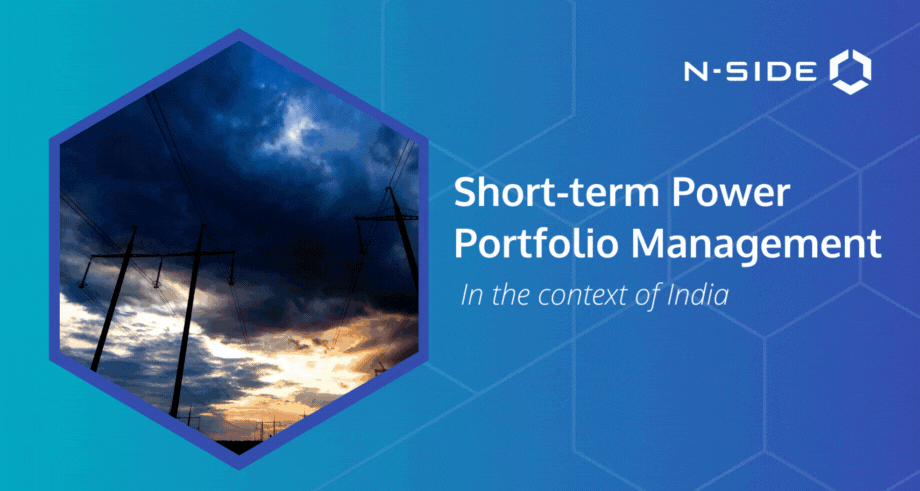Professional Services
Whether your challenge can be solved by our existing products or requires the development of new analytics solutions and market design approaches, our team is ready to help.
Integrated Forecasting in India: A competitive advantage in short-term power portfolio management


Managing portfolio in short-term electricity markets in India using AI
The unprecedented volatility in energy markets across the world
Today, the structural changes in the energy sector are bringing variability and uncertainty never witnessed before in energy portfolios. This also comes with unprecedented levels of volatility in the energy markets which can be frightening for risk managers.

This is a worldwide trend and India is in the front seat of these changes as it is undergoing one of the fastest energy transformations in the world according to a recent report from the International Energy Agency (IEA (2021), India Energy Outlook 2021). IEA reported that electricity demand has doubled over the last 2 decades and another 35% increase is planned by 2030. Moreover, India is also on the fast track with regards to the decarbonization of the electricity sector and is on the way to overcome its engagements from the Paris Agreement with an ambitious addition of 450 GW of renewable capacity by 2030.
The increasing uncertainty and market volatility are making energy portfolio management more challenging, requiring more innovative approaches.
How does portfolio management work?
Portfolio management is often split into 2 parts, managed by distinct teams: one for the far curve and long-term procurement, the other one focusing on short-term optimization. This split can easily be explained by the fact that long-term and short-term curve management implies different expertise and market drivers are not necessarily the same.
On one hand, on the far curve, the accuracy of the portfolio position is highly linked to the quality of the underlying data systems. For what regards market valuation and optimization of open positions, traders have to focus more on macroeconomics trends. However, it should be noted that there is an increasing correlation between the markets movements at the front and the far curve. As a result, more quantitative techniques, such as technical trading, can reveal themselves profitable on long-term markets as well but require a decent level of liquidity.
On the other hand, short-term teams are much more data-driven, not only to have an accurate view of their portfolio (weather driven) but also to make winning trading decisions.
On top of that, the amount of data available is exponentially increasing (think of the amount of data generated by the 250 million smart meters which are being installed at the Indian energy consumers' end), making it more and more challenging for a human brain to extract the relevant information. Hence, it becomes crucial for them to have access to reliable decision support tools, extracting the relevant information from the energy data ocean to drive their business.
The role of Machine Learning in mitigating uncertainty
Machine Learning algorithms can be a powerful tool to help portfolio managers to extract information from data, making it possible to embrace uncertainty, better manage risks, and make the most of the increasing market volatility.
For a portfolio manager, the notion of risk is ultimately related to a financial metric. The risk does not lie so much in the uncertainty on volume (MWh) but rather in the financial uncertainty it creates (i.e. with an open position of 1MWh, what will be the final price for it?). Aligning the machine learning objective function with the business objective is quite often overlooked in generic machine learning toolboxes that aim to target a wide number of use cases. N-SIDE combines the best of both algorithmic and business expertise, allowing to always deliver state-of-the-art forecasts, trained with the most relevant objective function.
Nevertheless, even the best forecasting models cannot alleviate all uncertainties. By definition, it is only possible to have an accurate view of your consumption and production ex-post; furthermore, in most cases, this ex-post view is based on several assumptions such as standard load profiles used to disaggregate distributed load between the different retailers. For instance, renewable energy sources cannot be planned 100% accurately, in which case, you need to rely on a forecast. This implies that there will be deviations as you move towards delivery and, therefore, portfolio managers need to hedge them constantly.
On top of the ability to integrate the underlying business objective, the second benefit machine learning algorithms can bring in short-term trading is its ability to analyze thoughts of data signals, such as weather, outages, market levels, and market recent moves, to provide a clear direction of where the market will evolve in the future.
N-SIDE, a Belgian-based company specialized in the development of decision support tools based on advanced analytics, has developed very specific expertise in both customized volume forecasting and market arbitrage forecast; this unique combination allows to have an integrated portfolio strategy with which portfolio manager can reduce their financial risks and embrace the volatility created on the markets by competitors. This integrated portfolio management strategy will be required to increase both direct and indirect margins and overcome the challenges brought by the ongoing energy transition in India.











